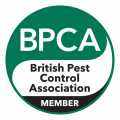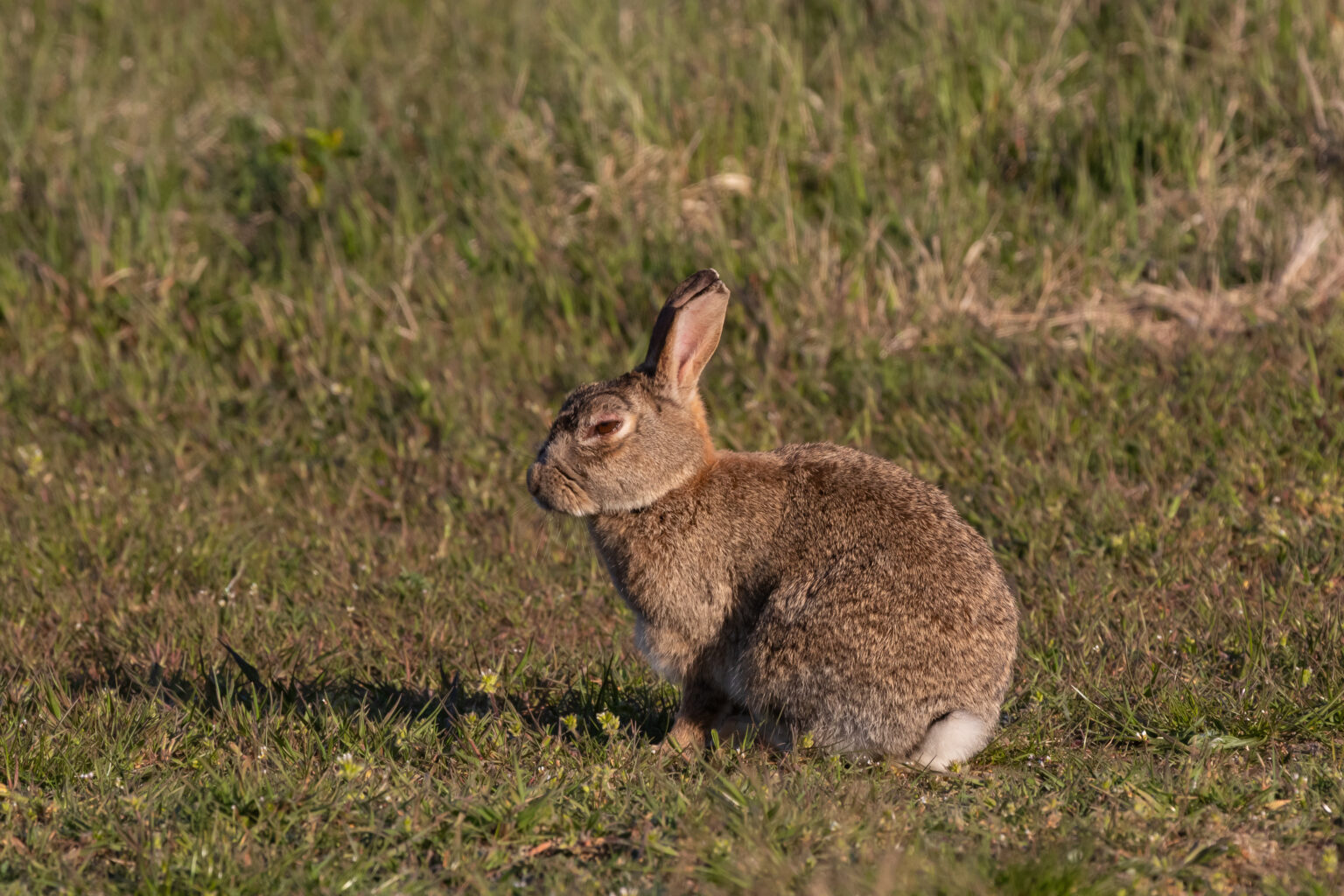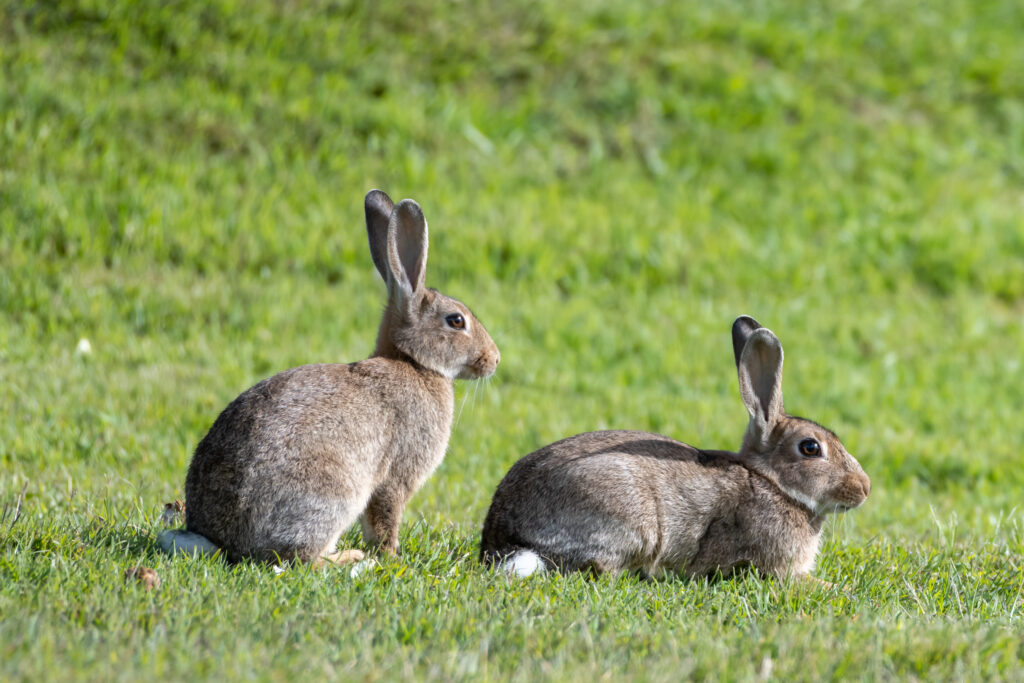Rabbit Pest Control Service
Did you know that in the UK wild rabbits are classed as pests? Although they are cute and fluffy to look at, wild rabbit populations can grow exponentially if they are left unmanaged, so if you require an effective rabbit control service then look no further than DALPEST Pest Solutions.
Rural properties and land owners / farmers are most likely to need a rabbit control or removal service. This is because under section 1 of the Pests Act 1954 it is cited that it is the responsibility of the land owner to manage the rabbit population.
Due to the rate at which they breed, it is impossible to eradicate all wild rabbits from a particular site, however, by speaking with the experts we can devise a suitable method of pest management that works for you.
DALPEST Pest Solutions have devised a quick run down of everything you need to know about this pest – including the key signs of rabbit activity, a list of approved methods for removing them, and what to do if you suspect you have a problem.
Rabbits are considered to be a pest all year round. This is because although their breeding season spans between January and August, evidence suggests warmer winters can potentially extend this period. A family of rabbits can consist of one male and several breeding females who can begin reproducing from the age of 3-4 months.
As with most pests, there will be some clear signs that you have a problem. The speed in which you notice the signs will determine how quickly a solution can be put in place. Some tell-tale signs of rabbit activity include:
- Destruction of crops: Rabbits can be vastly damaging to fields of crops and can destroy large quantities in a short space of time. They are drawn to plentiful sources of food.
- Nibbled Plants: Rabbits are also very partial to eating and nibbling any plant life they can find. No plants are safe when there are hungry rabbits around and this can include bark from trees.
- Holes and burrows: New or suddenly appearing holes in the ground can be a clear sign of rabbit activity. These fresh holes are known as burrows and can lead to hidden entrances into warrens.
- Fur: There may be evidence of fur left behind on fencing or vegetation.
- Droppings: Small round pellets approximately 7-10mm in size are typical of rabbits, and there will be lots of them! As with most pests, finding droppings is usually one of the first indicators that you have a pest problem.
pest control methods for rabbits
Understanding the problem
Trapping or shooting
Effective pest management
The most effective time for conducting rabbit control is between November to March. There are a number of options for controlling wild rabbit populations. Many of these approaches are classed as humane and some are specialist methods involving techniques which require additional training.
Wherever possible DALPEST Pest Solutions believe in the use of non-toxic or humane techniques for managing pests. We will work with you and tailor a solution to best suit your requirements and also the type of site or land you own. Very often the best course of action requires a combination of methods.
Rabbit Control Techniques
Trapping: This is an effective method for catching multiple animals that we recommend and can be performed all year round. Trapping must be performed by a professional pest control team. Live trapping does involve a strict routine of regular checks on the traps and also involves a quick and humane dispatching of the animals caught. There are several types of traps available and the biggest advantage of this method is that any animal captured that is a non-target species, can simply be released.
Shooting: DALPEST Pest Solutions are able to offer shooting as a pest management option. These can be performed at a time to suit you and we are happy to shoot during the day or at night depending on the pest activity. Shooting is considered a humane practice for wild rabbit control because the death is instant.
Gassing: An effective method which can recue the population by as much as 80%. Pellets are placed within the burrows and are activated once in contact with moisture. Due to strict safety precautions this treatment must only be carried our by trained professionals.
Ferreting: This control method requires experience from the handler. It can take time to have effective results and involves using ferrets within rabbit burrows to drive them out into the open.
What to do if you have issues with rabbits
If you have noticed any of the key signs of rabbit activity, or you are looking for the best way to manage wild rabbits on your property then these are the three steps that will help you:
If you are in need of rabbit control then please get in touch with us. DALPEST Pest Solutions have been established since 2017 and we have a dedicated and professional team of technicians with the knowledge and capabilities to help solve your pest problem.
Give us a call today on 0333 2026 223 or complete the form on the bottom of this page to discuss your requirements, or ask us for advice.
We need to firstly understand the scale of your issue, so one of our team will come to site and assess the severity of the problem for you. Our flexible approach means we can work with you to find a suitable time, and we will discuss all possible options for management and control of the rabbits.
Our team will fully assess the issue and make some tailored recommendations for you. These will outline the most appropriate methods of rabbit control for your particular site and the timescales in which we can operate, this way you are fully informed of the process from the beginning.
Why choose Dalpest pest solutions?
Rapid response available - we get to you quickly

British Pest Control Association (BPCA) members

Highly-skilled, experienced pest control technicians
100% child, pet and environment friendly
Education, not just eradication

Five-star customer service for all pest problems
Why CHOOSE Dalpest PEST SOLUTIONS?
Rapid response available - we get to you quickly

British Pest Control Association (BPCA) members
100% child, pet and environment friendly

Highly-skilled, experienced pest control techs
Education, not just eradication

5-star customer service for all pest problems
Myxomatosis - what is it?
This is a nasty virus which has a 95-99% mortality rate in rabbits. It is spread rapidly between animals by the rabbit flea and other blood sucking insects. It can be spread from wild to domestic rabbits but does not affect other domestic animals such as cats and dogs, or humans.
There are some key signs that a rabbit may be infected with the myxomatosis virus;
- Swollen, red or weeping eyes
- Lumps and scabs across the face and body
- Difficulty breathing

Facts about rabbits
- Rabbits are not related to rodents as many people believe.
- A fully grown rabbit can be up to 40cm long.
- They are mainly light brown in colour although there are some variations with some rabbits being dark grey or even black in colour.
- Adult rabbits can consume up to 0.5kg of green food per day.
- Females or does as they are known will have approximately 5 babies per litter and up to 5 litters per year!









